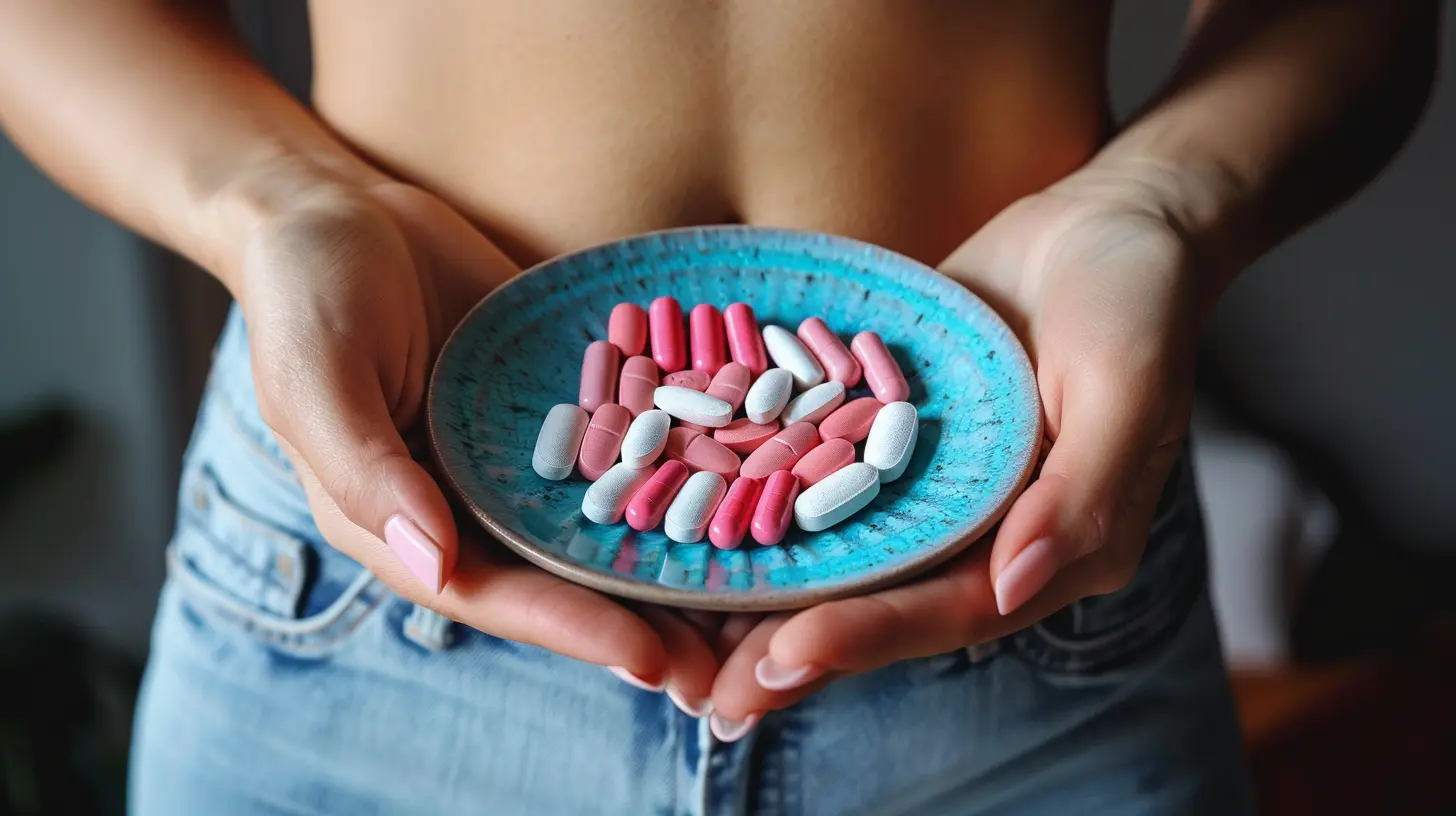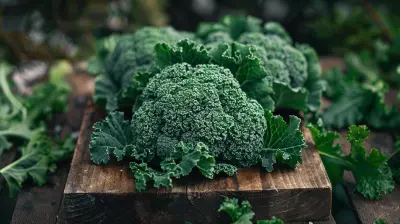The Differences Between Good and Bad Estrogen
10 May 2025
Estrogen is often called the "female hormone," but it's so much more than that. It plays a critical role in both men's and women's health, impacting everything from mood to metabolism. But did you know that not all estrogen is created equal? Some types support your well-being, while others can be harmful if they accumulate in excess.
So, what exactly is the difference between good and bad estrogen? How do these different types of estrogen impact your health? And most importantly, what can you do to keep the balance in check? Let's break it all down. 
Understanding Estrogen: The Basics
Before we dive into the good versus the bad, let's get a quick refresher on what estrogen actually is.Estrogen is a group of steroid hormones responsible for developing and maintaining female reproductive health. However, men also produce estrogen in smaller amounts, and it serves crucial functions in brain health, bone density, and cardiovascular function.
The three main types of estrogen in the body are:
1. Estradiol (E2) – The most potent estrogen, primarily produced during reproductive years.
2. Estrone (E1) – The dominant estrogen after menopause.
3. Estriol (E3) – Primarily produced during pregnancy.
While these are the naturally occurring forms in the body, estrogen can also be influenced by external factors such as diet, lifestyle, and environmental toxins. This brings us to the core of our discussion – the differences between "good" and "bad" estrogen. 
Good Estrogen: The Protector
When we talk about "good" estrogen, we’re referring to the protective metabolites that promote health and well-being. Specifically, the body metabolizes estrogen into different compounds, and some of these have beneficial effects.The Beneficial Estrogen Metabolites
1. 2-Hydroxyestrone (2-OH-E1) – This is considered a "clean" estrogen metabolite. It helps maintain hormonal balance, reduces the risk of hormone-related cancers, and has antioxidant properties.2. Estriol (E3) – Although weaker, this estrogen supports vaginal and urinary tract health and has anti-cancer properties.
Having a healthy balance of these estrogen metabolites ensures that you reap the benefits of estrogen without unwanted side effects.
Benefits of Good Estrogen
- Supports Brain Function – Estrogen is neuroprotective, aiding memory and cognitive function.- Encourages Heart Health – It helps maintain good cholesterol levels and supports smooth blood vessel function.
- Boosts Bone Strength – Estrogen prevents bone loss, reducing the risk of osteoporosis.
- Reduces Inflammation – The right balance of estrogen can help combat chronic inflammation.
In essence, good estrogen is like a reliable friend who supports you without causing drama. But what about its darker counterpart? 
Bad Estrogen: The Trouble Maker
"Bad" estrogen refers to the metabolites that have been linked to negative health effects. These metabolites can increase inflammation, promote cancer growth, and disrupt hormonal balance.The Harmful Estrogen Metabolites
1. 16α-Hydroxyestrone (16α-OH-E1) – High levels of this estrogen metabolite have been associated with an increased risk of breast and uterine cancer. It promotes cell proliferation, which can lead to abnormal growth.2. 4-Hydroxyestrone (4-OH-E1) – This metabolite is particularly concerning because it can damage DNA and contribute to cancer development.
If these harmful metabolites dominate your system, estrogen shifts from being your ally to your enemy.
The Dangers of Bad Estrogen
- Increases Cancer Risk – Excess levels have been linked to breast, ovarian, and prostate cancers.- Leads to Weight Gain – Too much bad estrogen can contribute to fat storage, particularly in the hips and thighs.
- Triggers PMS and Hormonal Imbalances – Anxiety, mood swings, and severe cramps? Too much bad estrogen could be to blame.
- Causes Estrogen Dominance – An imbalance where estrogen overwhelms progesterone, leading to bloating, fatigue, and headaches.
Bad estrogen is like an overindulgent party guest who overstays their welcome, leaving behind a mess and a headache. 
What Causes a Shift Toward Bad Estrogen?
So, why does bad estrogen take over? It often comes down to lifestyle choices, environmental factors, and genetics.Common Estrogen Disruptors
1. Poor Liver Function – The liver is responsible for detoxifying excess estrogen. A sluggish liver means bad estrogen builds up.2. Xenoestrogens – These are synthetic estrogens found in plastics, pesticides, and personal care products. Your body mistakes them for real estrogen, worsening the imbalance.
3. Obesity – Excess fat tissue produces estrogen, creating an overload.
4. Chronic Stress – High cortisol levels interfere with hormone balance, shifting estrogen metabolism in the wrong direction.
5. Poor Diet – Processed foods, sugar, and alcohol contribute to estrogen dominance by impairing detoxification.
When these factors come into play, your body struggles to maintain the right estrogen balance—which can have serious consequences for your health.
How to Promote Good Estrogen and Reduce Bad Estrogen
Now that you know the difference, how can you make sure you're tipping the scales in favor of good estrogen? Here’s what you can do:1. Support Liver Detoxification
Your liver plays a key role in breaking down estrogen. To keep it functioning well:- Eat cruciferous vegetables like broccoli, cauliflower, and Brussels sprouts.
- Drink plenty of water and herbal teas.
- Reduce alcohol and processed foods.
2. Limit Exposure to Xenoestrogens
Since synthetic estrogens are everywhere, try to:- Use glass or stainless steel instead of plastic containers.
- Switch to natural personal care products and avoid parabens.
- Choose organic meats and produce to avoid hormone-disrupting chemicals.
3. Maintain a Healthy Weight
Excess fat acts like an estrogen factory. Keep your hormone balance in check by:- Exercising regularly.
- Eating nutrient-dense, whole foods.
- Managing stress to prevent cortisol from wreaking havoc.
4. Increase Fiber Intake
Fiber helps eliminate excess estrogen via digestion. Great sources include:- Flaxseeds and chia seeds.
- Leafy greens and vegetables.
- Whole grains like quinoa and brown rice.
5. Support Gut Health
A healthy gut influences estrogen metabolism. Improve it by:- Eating probiotic-rich foods like yogurt, kimchi, and sauerkraut.
- Taking a high-quality probiotic supplement.
By making these small but significant changes, you can help your body process estrogen efficiently, ensuring you get more of the good and less of the bad.
Final Thoughts
Estrogen is a powerful hormone that can be both beneficial and harmful depending on how it's metabolized. While good estrogen supports brain health, bone density, and cardiovascular function, bad estrogen can contribute to hormonal imbalances, weight gain, and even cancer risk.The key to maintaining a healthy estrogen balance lies in your lifestyle choices. By eating the right foods, reducing exposure to toxins, managing stress, and supporting liver detoxification, you can ensure that estrogen remains your ally rather than your enemy.
So, think of estrogen like a seesaw—your goal is to keep it balanced. With the right habits in place, you can harness its benefits while avoiding the pitfalls of estrogen dominance.
all images in this post were generated using AI tools
Category:
Womens HealthAuthor:

Jackson Mahoney
Discussion
rate this article
4 comments
Myles Hunter
This article effectively highlights the crucial distinctions between good and bad estrogen, emphasizing the importance of balanced hormone levels for overall health and well-being. Great insights!
May 22, 2025 at 2:51 AM

Jackson Mahoney
Thank you for your feedback! I'm glad you found the distinctions important for overall health.
Quade Harmon
Understanding the differences between good and bad estrogen is essential for empowering our health journeys. By making informed choices, we can nurture our bodies, balance our hormones, and embrace vitality. Let's continue to learn, grow, and celebrate the incredible impact knowledge can have on our well-being!
May 18, 2025 at 2:27 PM

Jackson Mahoney
Absolutely! Understanding estrogen types is key to achieving hormonal balance and enhancing overall health. Let's keep exploring this vital topic together!
Asher Cook
Good estrogen brings balance; bad estrogen brings drama—like a soap opera for your hormones!
May 18, 2025 at 3:51 AM

Jackson Mahoney
Thank you! That's a clever way to highlight the importance of hormonal balance. It's true—understanding the differences can help us navigate our health better!
Grace Kirkland
Great article! Understanding the differences between good and bad estrogen is so important for our health. It’s fascinating how these hormones can impact our well-being in various ways!
May 13, 2025 at 4:23 AM

Jackson Mahoney
Thank you for your kind words! I'm glad you found the article insightful. Understanding estrogen's role is indeed crucial for our health!



